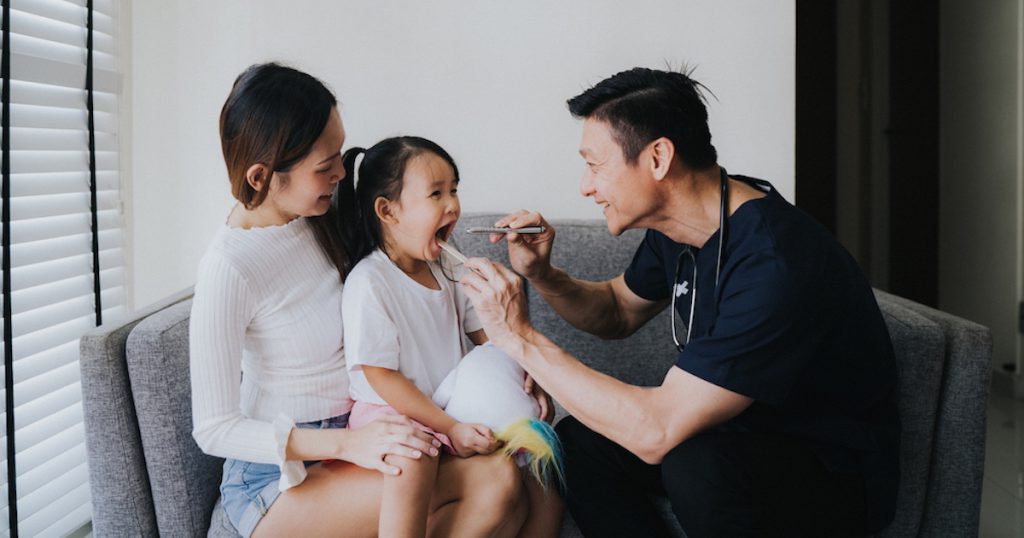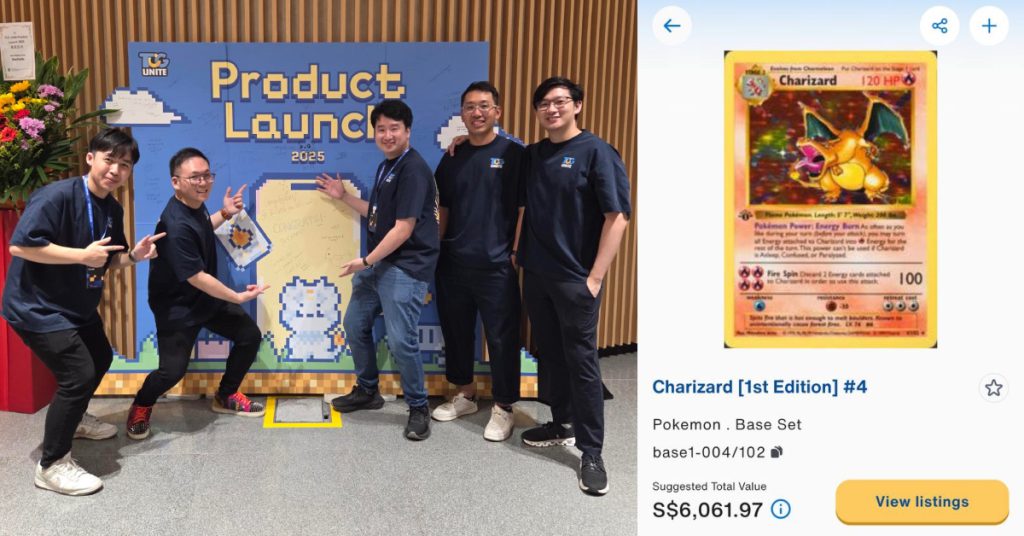The outbreak of the COVID-19 virus has placed the healthcare system in Singapore (and other parts of the world) under severe pressure.
Following the outbreak of the pandemic, many startups focusing on telemedicine have sprung up to take on the challenge of innovating the way healthcare services can be provided to patients.
In general, telemedicine aims to assist healthcare professionals in providing services — including assessment, diagnosis, treatment and consultation — to patients via remote technology to minimise in-patient visits.
According to research by RedSeer Consulting, the online health sector in Southeast Asia is expected to grow 10 times by 2025, with Indonesia and Singapore as the main markets, accounting for 50 to 60 per cent of the growth.
Who are the players in S’pore’s telehealth space?
There are quite a few telehealth players in Singapore, some specialising in more niche areas like pet health and sexual health.
ZumVet, for instance, provides easy access to affordable veterinary care through video consultations, online booking of house calls and home-based services, as well as medication delivery.
There are also several startups in Singapore that focus on men’s and women’s health. Ethel Tan is one particular entrepreneur that has traversed both fields — she co-founded Noah, a discreet digital clinic for men in June 2020, and started up Zoey, a telemedicine startup that caters to all aspects of women’s healthcare just nine months later.
Like Zoey, Dear Doc aims to be a one-stop solution for personalised women healthcare. It offers access to hassle-free and judgment-free medical care for birth control, and other female sexual and reproductive health conditions.
Being an Asian woman who has lived in Asia her entire life, I could personally relate to challenges (that women face when accessing healthcare) — the severe lack of awareness around sexual and reproductive health, the taboo and stigma around these topics, the fear of being judged, the inconvenience of waiting in clinics, the high cost, and the inadequate support and counselling to address questions and concerns.
– Shruti Dwivedi, founder and CEO of Dear Doc
As such, she wanted to address these challenges and make healthcare accessible, convenient, affordable and judgement-free for women across Asia.

With Dear Doc, users can access sensitive medical care from the comfort and privacy of one’s own home.
Its female doctors will review the patient’s health profile and do a video consultation to discuss medication options that are best suited for their health and personal preferences, and address any questions or concerns that they may have.
Once the medication is ordered, Dear Doc will deliver it to them and refill at their preferred frequency at no additional cost.
Other telehealth startups in Singapore pretty much operate in a similar fashion, though they may have different motivations for starting up.
Back in 2016, Doctor Anywhere (DA) founder Lim Wai Mun had participated in a charity initiative where he helped distribute lunchboxes to elderly living in older housing estates in Singapore. Through his interaction with these seniors, he realised that they were unable to leave their homes to seek basic medical care from doctors.
He wanted to come up with a solution that can help give access to free and convenient health to those in need came up with the idea of DA. It started out as a non-profit side project, which eventually into a full-fledged businesses as he realised that pivoting it into a commercially viable model could help widen its reach and benefit more people.
Under the DA network, users also have access to an extensive panel of general practitioners, specialists and allied healthcare providers.
Through the app, users can consult a licensed local doctor anytime, anywhere, and get medication delivered to their doorstep within hours. Medical history, health reports and other documents are also stored in-app for easy access.
Complementing this ecosystem is the DA Marketplace, where users can shop for a wide range of health and wellness products and services — such as supplements, healthy snacks and book home-based healthcare services like health screenings, vaccinations, mobile doctor and nursing services — all in one place.
WhiteCoat had the same vision — it wanted to deliver accessible and affordable healthcare from anywhere in the world, so that visits to the doctor are as convenient and hassle-free as simply accessing an app on your phone.
“To make this vision a reality, the team looked at the traditional patient journey, identified the key pain points on convenience, cost and accessibility, and redefined the entire process, effectively digitalising the patient experience via the WhiteCoat app,” explained Justin Chow, Chief Marketing Officer of WhiteCoat.
WhiteCoat’s teleconsult service covers a wide range of healthcare services, including primary care, specialist care and allied healthcare. Put simply, patients can expect to connect with general practitioners (GP), paediatricians and mental wellness professionals on the WhiteCoat app.
After downloading its app, patients will be able to connect with a doctor on-demand, and have their medication delivered to their preferred location as quickly as within 90 minutes.
Beyond a teleconsultation service, WhiteCoat also supports a variety of home-based, in-person services to support patients with longer term healthcare requirements, allowing patients to have their annual health check-ups in a comfortable and familiar environment.
Upon conclusion, all test results will be uploaded in the patient’s WhiteCoat app for easy access, and patients can have a follow-up consultation with any one of its doctors to close the loop.

On the other hand, Hidoc — which was founded in 2019 — was born out of the founders’ ambition to support women and the needs of working families.
“Just like most women in the workforce, our priorities were on our families (instead of) ourselves. Our wellbeing was sidelined and we wanted to improve the many dimensions — including the physical, cognitive and psychological needs of one,” said Dr. Christina Low and Carolyn Goh, co-founders of Hidoc.
“In short, (we wanted) to simplify wellness by providing a single touchpoint for care in building and nurturing (healthy) families.”
For Hidoc, users would first need to register for an account before they can get access to the full features of the mobile app.
Upon registration, they will get access to science-based healthcare content from experts and specialists, book consultations with a specialist or GP either virtually or in-clinic, as well as upload medical records for sharing with medical practitioners before consultation.
Users can also receive post-care support from Hidoc’s dedicated team of clinical support personnel from education to personalised follow-up.
Lastly, Serene Cai and Dr. Shravan Verma started up Speedoc in 2017 to make hospital-level care accessible and affordable to those in Singapore and across the region.
“Speedoc operates on a decentralised healthcare model that enables people to access healthcare anywhere. Our end-to-end care system connects qualified medical professionals to patients and delivers different types of care catered to different types of conditions,” explained Cai.
Users can browse their suite of services — ranging from requesting a doctor or nurse visit to your house, teleconsultation, remote monitoring, baby vaccinations, health screenings, and ambulance service — on its app and book an appointment within minutes.
They can also add details of family members to their account in the app to keep track of everyone’s health at a glance, allowing them to have better visibility of their medical data and treatment journey whilst empowering them with better control over their health.
Perks and downsides of a telehealth platform
Generally, telehealth users can quickly access a wide range of medical and healthcare services on a single app.

Besides the obvious convenience and accessibility, privacy and security are also some of the key benefits of teleconsulting from the comfort of home. According to Chow, those who opt for their mental wellness service have shared that they feel less stigma associated with virtual therapy compared to in-person therapy.
Telehealth also offers better health management. “When you can see your doctor as often as you need to, without the challenges of getting into the office, you can practice better management of your medication, lifestyle, and any chronic conditions you might have,” said Low and Goh.
Chow added that another understated benefit of utilising telehealth platforms is its safety.
Compared to a traditional clinic setting, telehealth eliminates the risk of cross-infection with other unwell patients in a shared space, and allows you to receive quality healthcare from the safe confines of home, with medication delivered to your doorstep.
– Justin Chow, Chief Marketing Officer of WhiteCoat
However, the downside of using telehealth is that telemedicine is not meant for emergency situations or life-threatening care. There are some health conditions which may not be suitable for online consultations or require further physical examination by the doctor.
“In such cases, the doctor would be able to quickly assess the suitability of the patient for video-consultation within the first few minutes of the call, and refer them to the nearest DA Clinic or the appropriate healthcare provider if they are deemed unsuitable,” elaborated Lim.

However, this is only applicable to a small pool of patients. For WhiteCoat, its data revealed that 98 per cent of their patients are able to receive a diagnosis or treatment plan via teleconsultation, and only the remaining two per cent are referred to alternative or escalated forms of care.
Hidoc co-founders also warned of the possibility of misdiagnosis (which may result in added costs for the patients when they want to get a second opinion or re-diagnosis), and the possibility of missing out other symptoms that are too subtle to be detected.
Additionally, data leaks represent some of the negativity surrounding telehealth platforms.
“Much like other forms of personal data, patients’ medical data is regarded as especially sensitive, and demands a higher standard of protection, which we have accounted for in our security systems since inception,” assured Chow.
In particular, WhiteCoat has worked closely with the respective government agencies to assimilate specific advisory guidelines drafted for the sector.
Furthermore, the Personal Data Protection Act (PDPA) applies to the personal data collected, used and disclosed for the purposed of providing the telemedicine service, pointed out Hidoc.
As for Speedoc, they have adopted solutions like Singpass integration on their app to ensure that they are treating the right patients.
Challenges faced by the telehealth sector

According to Lim, the first challenge that DA faced was changing user mindsets.
In certain countries, seeking timely medical attention is not an ingrained habit, with patients only choosing to see a doctor when they encounter major health issues. At this stage, digital strategies might not be sufficient to support the patient recovery journey.
– Lim Wai Mun, founder and CEO of Doctor Anywhere
Additionally, infrastructural and logistical challenges prevail in certain regions, making it difficult to deliver medical care on time.
Thirdly, the rates of technological adoption across different regions hamper the adoption of digital solutions. Without strong technological infrastructure and use of data networks, the benefit of digital solutions cannot be maximised.
“We work closely with the government regulatory bodies to ensure medical and data privacy compliance is critical for the mainstream acceptance of telehealth services,” said Lim.
In fact, WhiteCoat and DA were one of the first few telemedicine providers to participate in a regulatory sandbox for the industry by the Ministry of Health (MOH), which was successfully concluded in February 2021.
WhiteCoat pointed out that the implementation of deep tech healthcare solutions requires rigorous rounds of testing, and oftentimes regulatory proposals before they are able to see their ideas come to live.
While this is challenging, Chow said that he is fully aware of the necessity of the process, as the nature of any healthcare service would naturally require a high level of adherence to wider overarching policies and standards of governance.
While there is no single piece of legislation governing telemedicine in Singapore right now, this is set to change once the Healthcare Services Act (HCSA) comes into force this year with the regulatory regime for healthcare services from a “premises-based” to a “services-based” form of licensing, shared Hidoc.
Separately, MOH has advocated going paperless with digital medical certificates, or DigiMC, since early 2020, which also helped to gain acceptance and trust among employers in Singapore.

To alleviate further concerns, the government has supported the verification of digital medical certificates via mc.gov.sg for patients and employers to verify their validity. DA also has its own online MC validator for employers to verify the authenticity of the issued MC.
As for Hidoc, the co-founders cited limited reimbursement options, especially for specialist care telehealth, as one of its biggest challenges.
“Majority of the specialist telehealth are out-of-pocket expenses but as consumerism continues to take centrestage and evidence on the benefits of telehealth services grows, it is reasonable to expect that there will be continued expansion in benefits, coverage and reimbursement for telehealth services, particularly those around specialist care,” said Low and Goh.
They added that they still face challenges in convincing digitally illiterate users to go digital and use telehealth services. “These group of people would likely prefer to physically go to a doctor despite knowing the benefits of telemedicine services.”
COVID-19 is a strong driver of growth

DA estimates that over the past two years, the COVID-19 pandemic has served as a catalyst to fast-track the adoption of telehealth services in the region by at least five years.
As user behaviour shifted to online purchases, we’ve experienced a tremendous uptrend in online medical consultations, medication purchase, and health-related purchases on our marketplace.
Similarly in the region, businesses and consumers have developed a better understanding of telemedicine — in part due to the strong encouragement by the local governments, and are much more motivated to adopt the service.
– Lim Wai Mun, founder and CEO of Doctor Anywhere
DA has actively supported the government’s public healthcare initiatives during the pandemic, such as running large-scale testing at foreign worker dormitories, providing remote medical support for COVID-positive individuals on home recovery, and piloting the online supervised ART service.

Earlier this year, DA was the first provider in Singapore to launch the online supervised ART service, which allows users to get their ART done conveniently at home for pre-event and travel purposes.
Today, its supervised ART service is one of the strongest drivers of its online telehealth services, with a capacity to serve around a few thousand cases a day.
Through the pandemic, user adoption of DA’s online services rose tremendously across all sectors.
“Apart from an accelerated uptrend in online medical consultations, we also saw a big uptick in our home-based healthcare services such as health screenings and vaccinations. Across our platform, we achieved a 300 to 400 per cent year-on-year growth in the past two years,” shared Lim.
“This has presented opportunities to the industry to go digital on many fronts, going beyond simply offering virtual consultations. We’ve been able to diversify our innovation pipeline to meet the pressing needs of our users by launching useful services such as COVID-19 Medical Advisory Clinic, mental wellness support, and specialist consultations.”
Similarly, WhiteCoat also experienced increased adoption following the pandemic.
While we were already on a steady growth trajectory before the pandemic hit, there was a sharp boost in awareness of our service and user adoption when community cases started to climb and people began to practise more caution about leaving their houses and going to shared spaces, especially clinics.
Rather than an opportunity, I think the pandemic has served as a strong push factor for the members of the public who might not have previously considered telehealth as a healthcare option to try out our service at least once.
– Justin Chow, Chief Marketing Officer of WhiteCoat
For example, they have extended help to numerous elderly patients — who they initially did not think would adopt their solutions — over the course of their recovery at home at the height of the pandemic.
There has also been a significant increase in the number of senior patients who now choose to teleconsult a WhiteCoat GP to manage their chronic conditions and have their medication refills delivered to their doorsteps.
Additionally, they also observed an uptick in the number of working parents who had to work from home together with their children doing Home-Based Learning, opting to teleconsult our paediatricians via teleconsultation when their children fell ill.
“The pandemic has created a paradigm shift in how people perceive and utilise healthcare, and has clearly illustrated the legitimacy of our service and USPs,” summed up Chow.
In light of the COVID-19 pandemic, Speedoc too has supported the government with COVID-19 containment, isolation, home recovery programmes (HRP), and with the support of its Home Vaccination Teams (HVT), elderly at home were able to get vaccinated.
It also helped to ease the gathering of people at Combined Test Centres (CTCs) and Quick Test Centres (QTCs) by offering Supervised Tele-ART via video consultation.
“We saw an uptake in our Supervised Tele-ART service as consumers were required to adhere to pre-event and pre-departure test requirements. The recent and ongoing opening of borders and the nightlife industry have also increased its demand,” said Cai.
Speedoc is also one of the providers selected for a two-year pilot trial as part of the MOH Office for Healthcare Transformation’s (MOHT) MIC@Home initiative, which allows non-Covid patients who require hospitalisation to be treated from home via virtual wards.
Hidoc also partnered with MOH Home Recovery Program and was also listed in the COVID-19 National Vaccination Program.

COVID-19 has only accelerated the adoption and awareness of telemedicine services. Though the older generation may still be apprehensive about consulting a doctor virtually, it’s encouraging to see that consumers, especially the sandwich generation, are becoming more tech savvy and willing to embrace new mediums for their healthcare needs.
This segment of consumers is becoming more accustomed to on-demand digital services (food, shopping, and now healthcare) because they get to save time, which translates to having more time to care for what matters most — their family.
– Serene Cai, co-founder of Speedoc
Telehealth sees increased interest from investors
Indeed, there has been a significant uplift in the acceptance and adoption of telehealth following the onset of the pandemic, due to the public’s awareness of the importance of social distancing and avoiding potential exposure to the virus.
The fact that the Ministry of Health has chosen to employ telemedicine as the designated mode of care for patients afflicted with COVID-19 is not lost on the public, and this also speaks volumes about the increasing regulatory acceptance and adoption of telehealth services in Singapore.
– Justin Chow, Chief Marketing Officer of WhiteCoat
“Back in 2017, the concept of telehealth was almost unheard of in the region, despite proven models in the US, UK and China. Fast forward four years, we’ve seen a wider acceptance of a hybrid model of accessing healthcare in the region, where users are now more receptive to healthcare being delivered via traditional and online solutions,” chimed in Lim.
He attributes this growing acceptance to strong support from its partners and network, which has helped them significantly grow their user base in the past year. He added that they currently run programmes with many of the largest MNCs, insurers and insurance brokers in the region.
Similarly, WhiteCoat also saw insurers in the region fully embracing the digital medium of healthcare consumption to enable insured members to enjoy quality care from the safety of their homes.
In particular, WhiteCoat has been appointed as AIA’s exclusive telemedicine partner in Singapore since March 2020, responsible for providing primary care to over 1.2 million insured members under AIA’s corporate and dependent base.
This strong insurer confidence in telehealth has also encouraged HR partners and corporates to embrace telehealth as a credible source of care for their employees.
According to WhiteCoat, it has been witnessing tremendous growth since its inception. In the first year of the pandemic, the company experienced an eight times increase in revenue, accompanied by a seven-fold surge in consultation figures.
At the back of this strong growth trajectory, WhiteCoat raised S$10.8 million in its last Series A round, marking it the largest Series A raised by a Singapore-based telemedicine company to date.
DA — which owns a chain of physical clinics and pharmacies in selected countries that they operate in — reported that they achieved three to four times growth in revenue year-on-year for the past three years.
It has also amassed 2.5 million users across five markets, and tripled the number of doctors and specialists in its network to more than 3,000 across Southeast Asia.
In August last year, it raised S$88 million funding in its Series C round. A few months later in November, it acquired Doctor Raksa, Thailand’s largest telehealth platform.
According to DA, this latest fundraising will significantly bolster its market leadership and further deepen their presence in existing markets. It will also allow the group to expand into new markets, such as Indonesia this year, to drive its mission of transforming the regional healthcare landscape through technology.

Closer to home, DA moved its HQ office to a penthouse unit at MTower in January 2022, and more than 200 new roles are expected to be added to its headcount.
As for Hidoc, it raised a seven-figure funding in its seed round last year. To date, it has over 20,000 users engaging with their specialists. In 2021, it also launched its consumer library called Nectar on women and children’s health and opened its first clinic in Raffles Place.
In the last two years, the number of users seeking specialist care on Hidoc increased five-fold in paediatric care and doubled in women’s health.
Meanwhile, Speedoc grew at least three-fold in terms of revenue and headcount annually. They have a nationwide presence in Malaysia are continuing to expand regionally.

However, unlike these other startups, fundraising has been the biggest challenge for Dear Doc. “As a female-focused business led by a solo female founder, raising funds has been extremely challenging,” lamented Shruti.
The future of telehealth: Is it here to stay beyond COVID-19?
Telehealth and online pharmacies are changing and leading the healthcare industry growth, and adoption have been accelerated by the pandemic. The industry is also figuring out how to be more connected, omnichannel-enabled and interoperable.
There are more players in the industry, and we see competition as a win for both the industry as well as for consumers. If there are no competitors, it would mean that it’s an industry that isn’t working. This healthcare evolution has brought forth many innovative solutions for users, and challenge us to evolve and do better everyday.
– Lim Wai Mun, founder and CEO of Doctor Anywhere
To sustain the telehealth momentum beyond COVID-19, he stressed that the industry must maintain a robust ecosystem that connects patients, healthcare providers and payers, and consistently innovate to stay relevant to users.
Chow shares the same sentiments — he feels that the telehealth phenomenon is here to stay and continue to become an important mainstay of Singapore’s healthcare infrastructure.
In fact, he views telemedicine as a “catalyst” for critical industry change, which doubles up as an important supplement to existing healthcare systems.
He pointed out that while most people are already familiar with using telehealth for primary care, its benefits can potentially go beyond that to support various functions of specialist care.
For example, WhiteCoat offers a General Paediatrics service that is supported by paediatricians from Thomson Paediatric Centre and SBCC Baby & Child Clinic.
Such strategic partnerships with renowned healthcare partners allow their patients to have an even more convenient access to the specialist care that they and their loved ones may require.
“Telemedicine, in its ideal state, should be a manpower-light and tech-heavy solution. When implemented efficiently, it can function as an important first point of medical contact and advice for addressing a patient’s healthcare concerns,” said Chow.
“Telehealth is certainly here to stay because it fills a real gap in healthcare accessibility and convenience. For Dear Doc, telehealth helps address much deeper painpoints for women when accessing care for sexual and reproductive health,” added Shruti.
According to Cai, the digital health market in Asia could grow up to US$100 billion in value by 2025 due to an ageing population and increase in chronic disease incidences, so the telemedicine industry is certainly one that is promising and encouraging.
Furthermore, as seen by the trend on how consumers are willing to pay for services that convenience them, Cai expects telemedicine to continue expanding beyond COVID-19.

Pandemic or not, the value of convenient and accessible virtual care has been realised. Now that patients know they can receive high-quality care without leaving their homes, it’s proving less enticing to go back to the old ways of crowded waiting rooms and rushed appointments. We are living amongst a paradigm shift in the medical field.
While we’re not sure how telehealth will hold beyond COVID-19, it is unlikely that it will go away in the future. Telehealth has many benefits that will carry on beyond the pandemic, (such as) the convenience for people who cannot miss work or school to get themselves or their children to the doctor’s office.
– Dr. Christina Low and Carolyn Goh, co-founders of Hidoc
As more patients feel more comfortable seeking out medical services and seeing their doctors online, there’s no doubt that telemedicine will continue to grow and become a mainstay in the post-pandemic era.
Featured Image Credit: Speedoc










